It’s been a while since I have done one of these, although I have more planned for the very near future. Sorry for the delay, life has been pretty hectic but I plan to share more awesome #ToyTuesday posts with you on a more regular basis moving forward. Now, back to the show! This time around I am reviewing the Toymany 6-Piece Sea Turtle Figurine Playset, which is half the size of previous sets I have reviewed by them. This isn’t and issue though, as there are only seven species of sea turtles found in the world’s oceans, and this set has six of them. So, how well do these figurines look like the species they represent and could Toymany have improved them in any way? Turtles are one of the groups of species I wish I could work with more, unfortunately we rarely get them here in the United Kingdom and when we do, they are often cold stunned and not in good health. Therefore, I am fortunate I get to see these amazing animals up close thanks to the efforts of Toymany
Green sea turtle
The green sea turtle (Chelonia mydas) is one of the largest sea turtles and is named for the greenish colour of its body fat, which results from its herbivorous diet – not the colour of its shell. Found in tropical and subtropical waters worldwide, adult Green Turtles primarily graze on seagrass and algae, helping to maintain the health of seagrass beds and coral reefs. They migrate long distances between feeding areas and nesting beaches, often returning to the same shores where they hatched. Despite conservation protections, they remain endangered due to illegal harvesting, habitat loss, and climate change impacting nesting beaches. They are also my favourite species of sea turtle so I am happy to add this species to my collection.
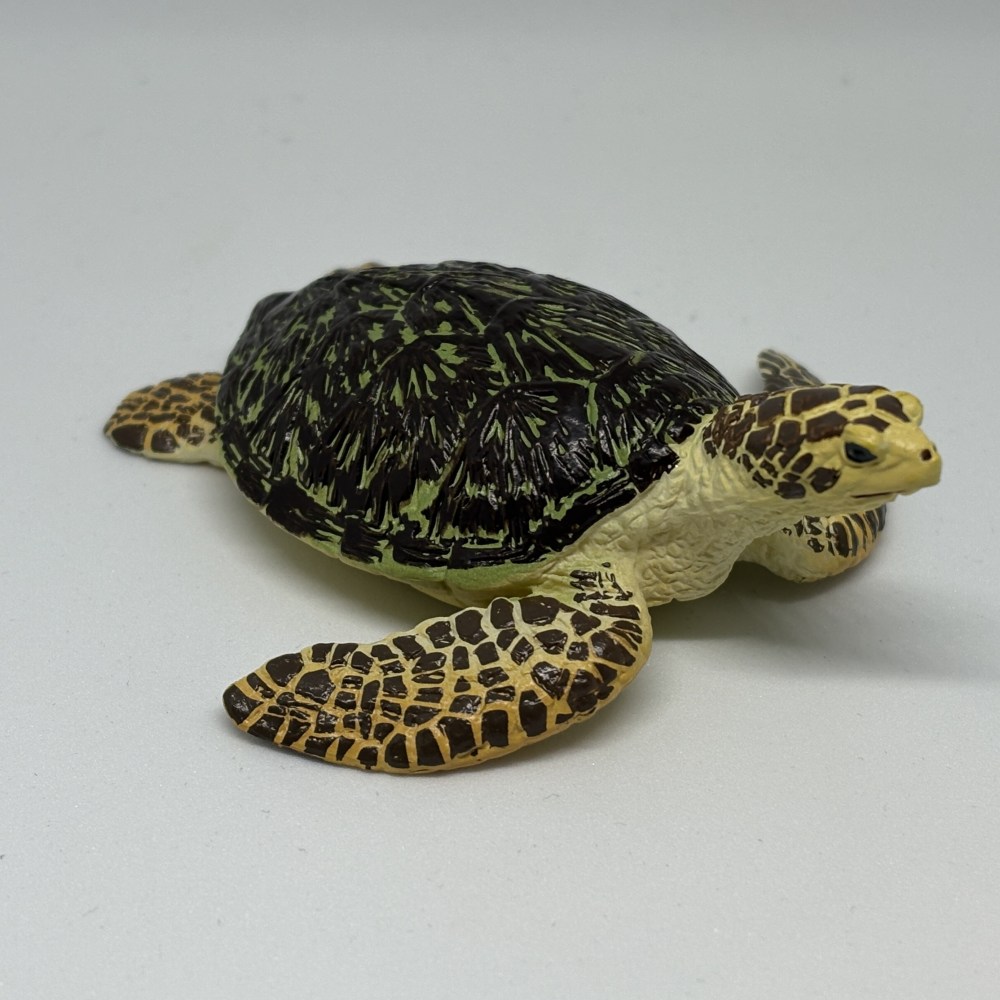
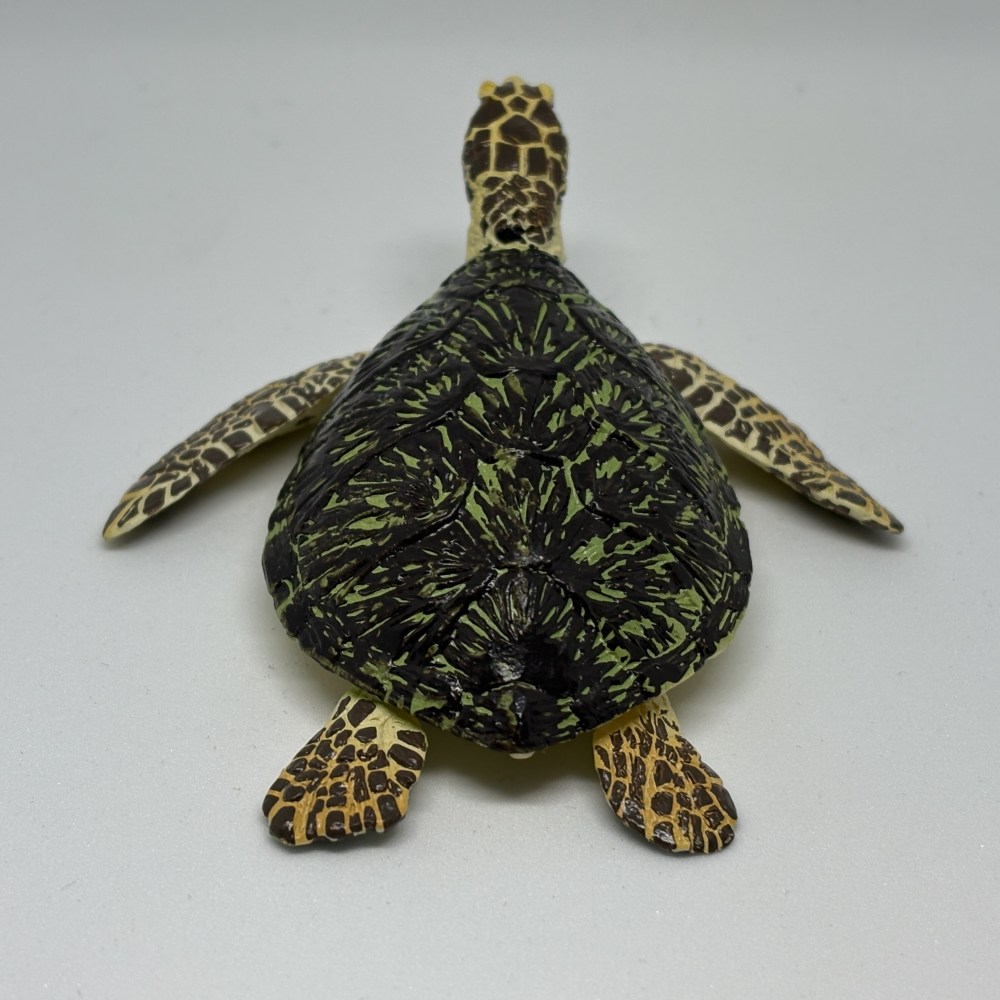

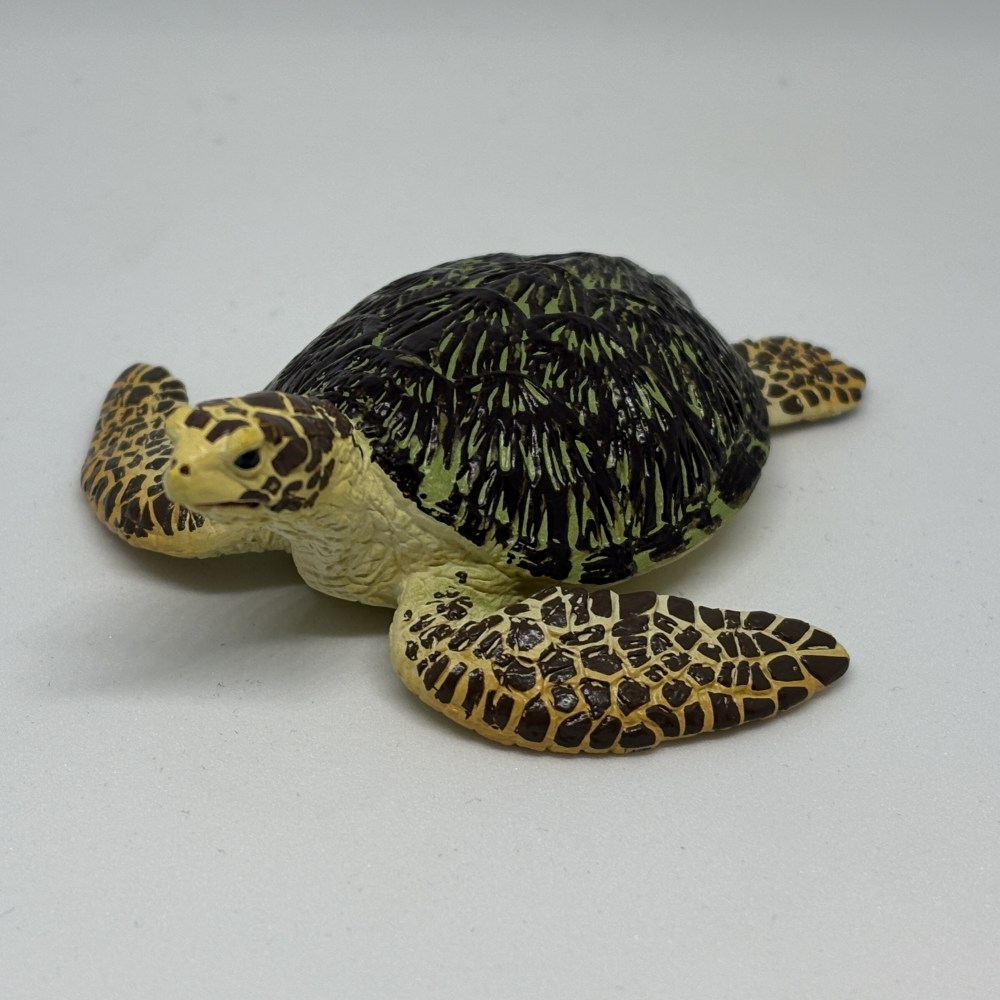
Hawksbill sea turtle
The hawksbill sea turtle (Eretmochelys imbricata) is known for its beautifully patterned shell, which has made it a target for the illegal tortoiseshell trade. Found mainly in tropical coral reef ecosystems, hawksbills have a narrow, pointed beak adapted for extracting sponges from crevices, making them crucial to maintaining reef health and diversity. Despite their ecological importance, they are critically endangered, with populations declining due to poaching, coral reef degradation, and climate change. Global conservation efforts, including trade bans and marine protected areas, are essential for the recovery of this iconic species. This Toymany figurine perfectly captures the shell of hawksbills which is quite the feat.
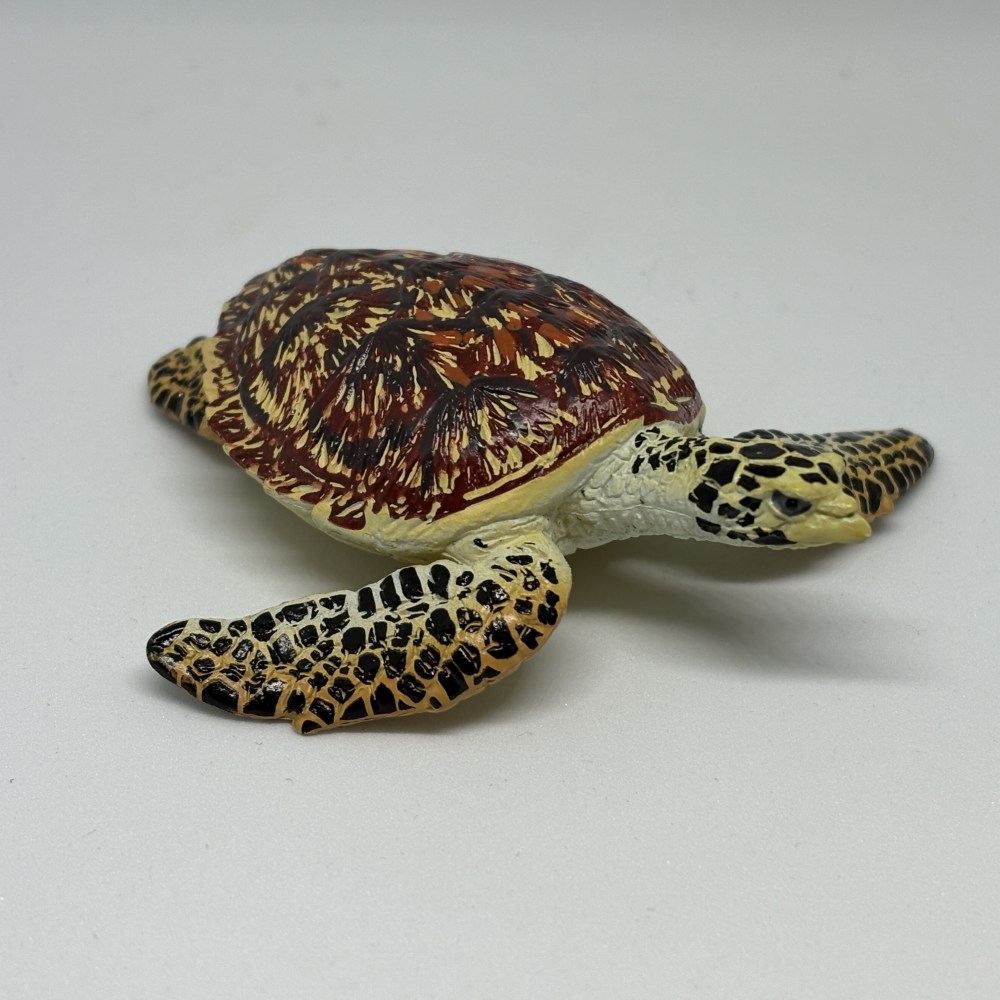
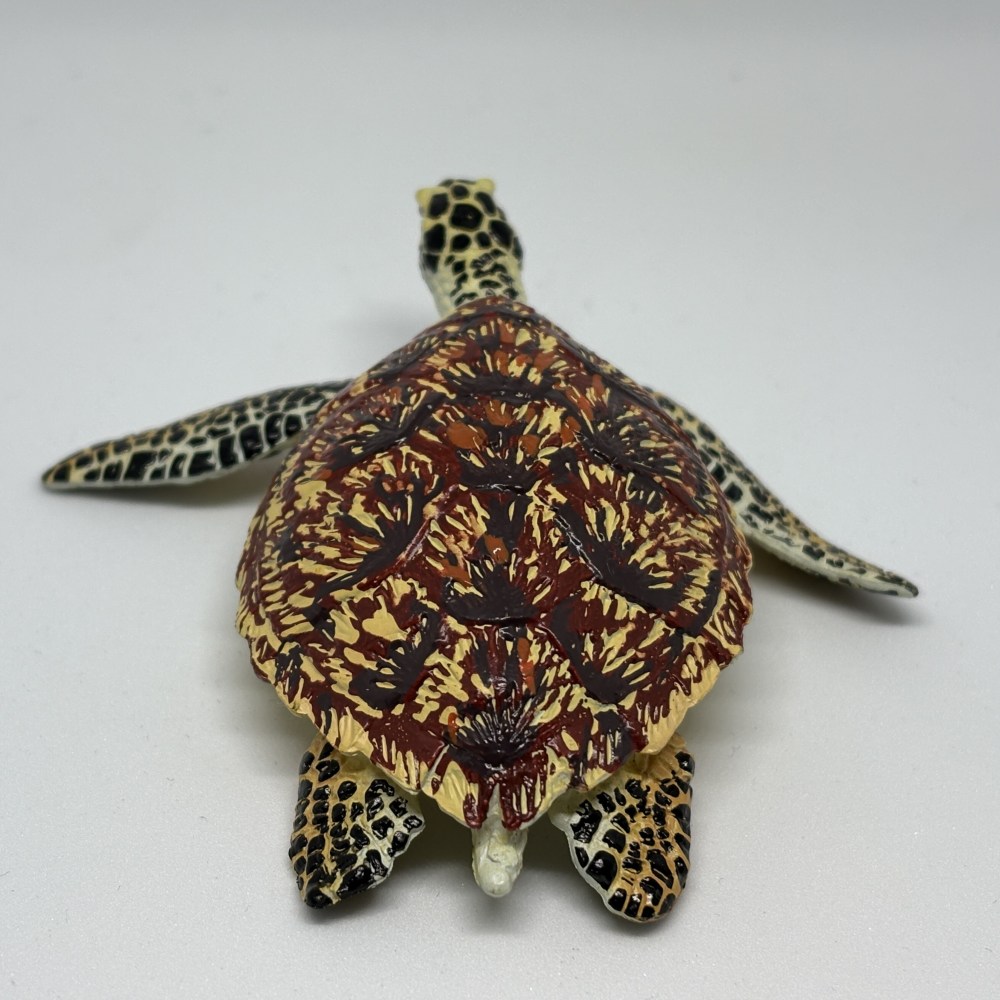
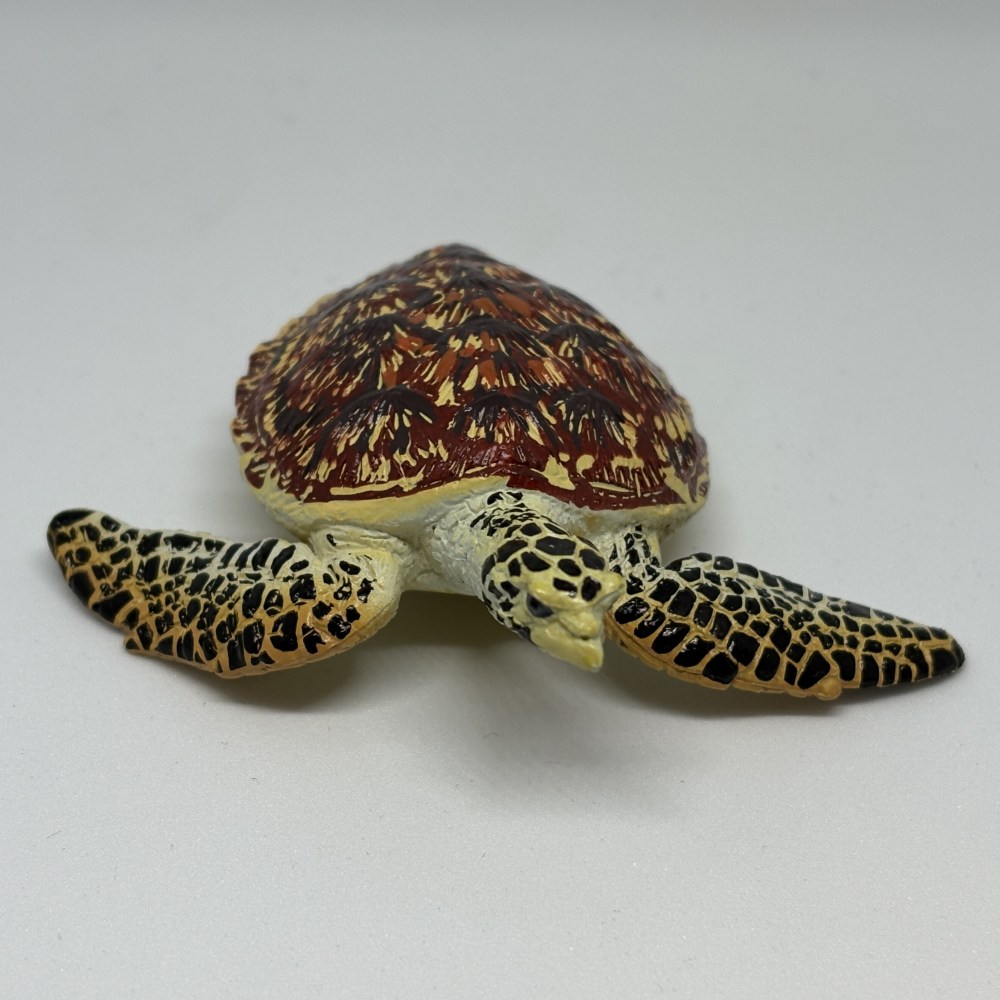
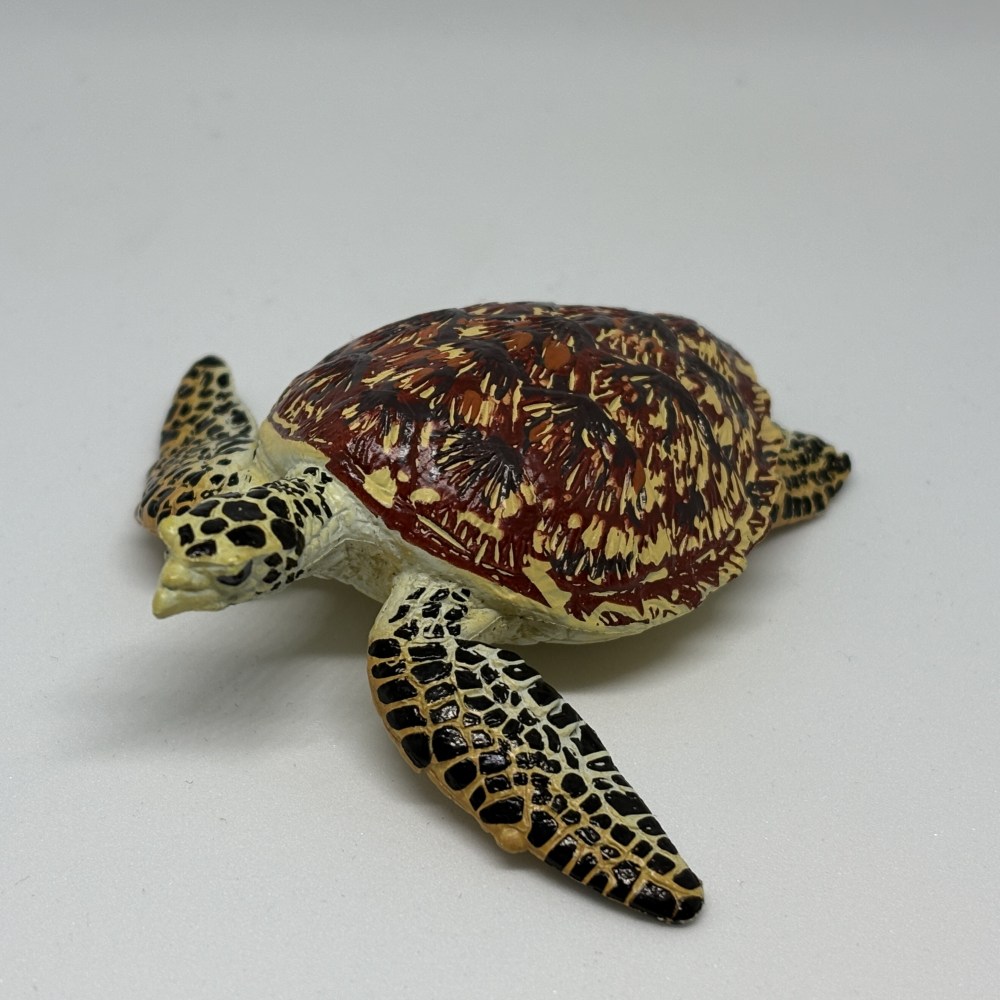
Leatherback sea turtle
The leatherback sea turtle (Dermochelys coriacea) is the largest and most wide-ranging of all sea turtles, capable of crossing entire ocean basins. It is easily distinguished by its leathery, ridged carapace instead of a hard shell. Leatherbacks primarily feed on jellyfish and play an essential ecological role in controlling jellyfish populations. We sometimes have them visiting our waters here in Great Britain to feed on our plentiful jellyfish populations. Their unique physiology allows them to tolerate cold waters, enabling them to forage in regions other turtles cannot. However, leatherbacks are vulnerable due to plastic ingestion, entanglement in fishing gear, and loss of nesting habitats. Conservation efforts focus on protecting migratory routes and reducing marine debris.
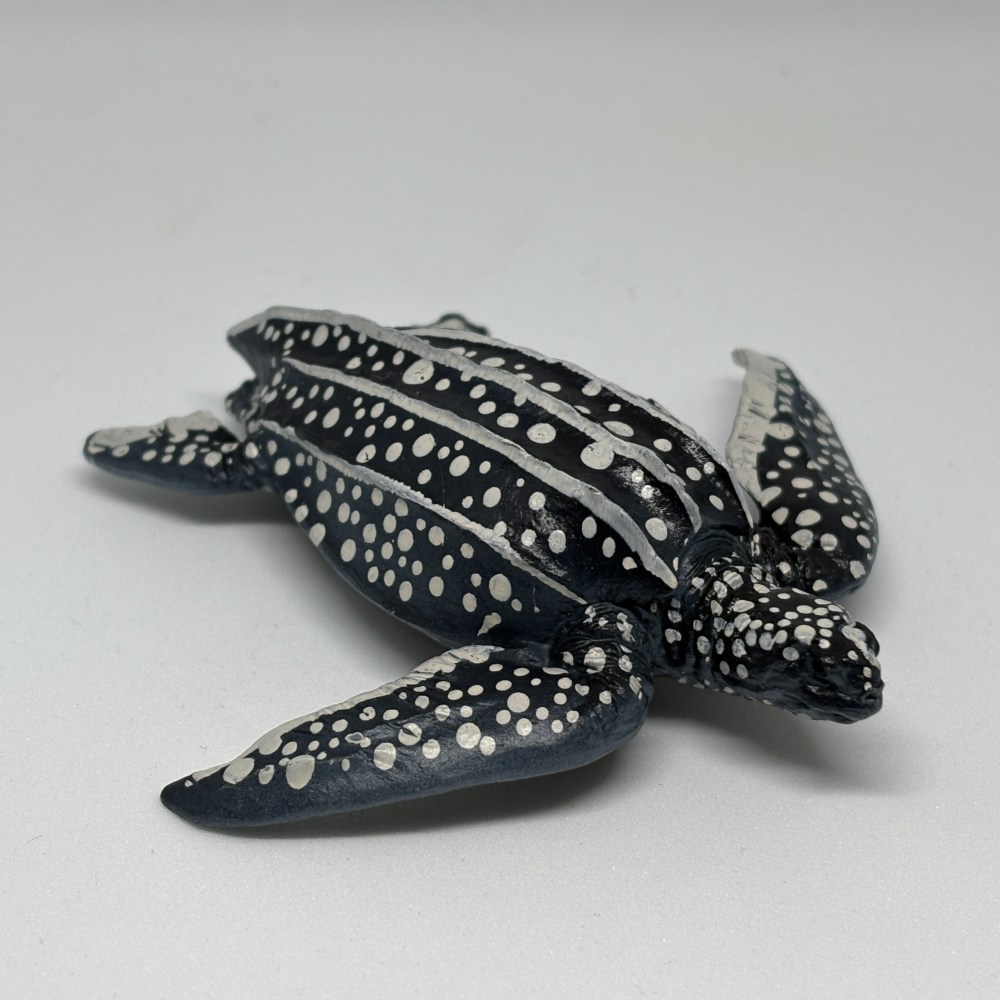
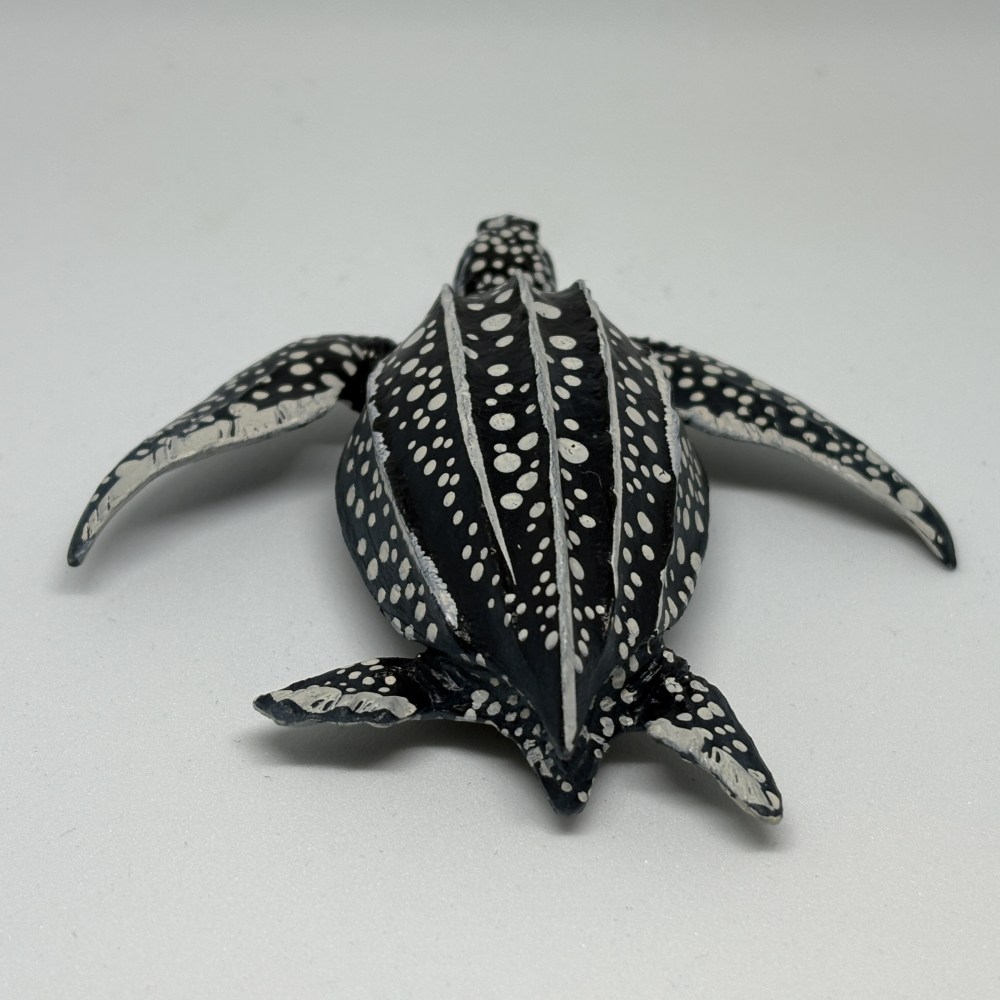


Loggerhead sea turtle
The loggerhead sea turtle (Caretta caretta) is easily recognised by its large head and powerful jaws, adapted for crushing hard-shelled prey like crabs and molluscs. It inhabits temperate and subtropical regions of the world’s oceans and is known for its extensive migrations between feeding grounds and nesting beaches. Loggerheads play a key role in maintaining healthy marine ecosystems by controlling invertebrate populations. Unfortunately, they are classified as vulnerable on the IUCN Red List due to threats from bycatch, coastal development, and pollution. Conservation measures such as protected nesting sites and international agreements aim to ensure their survival.
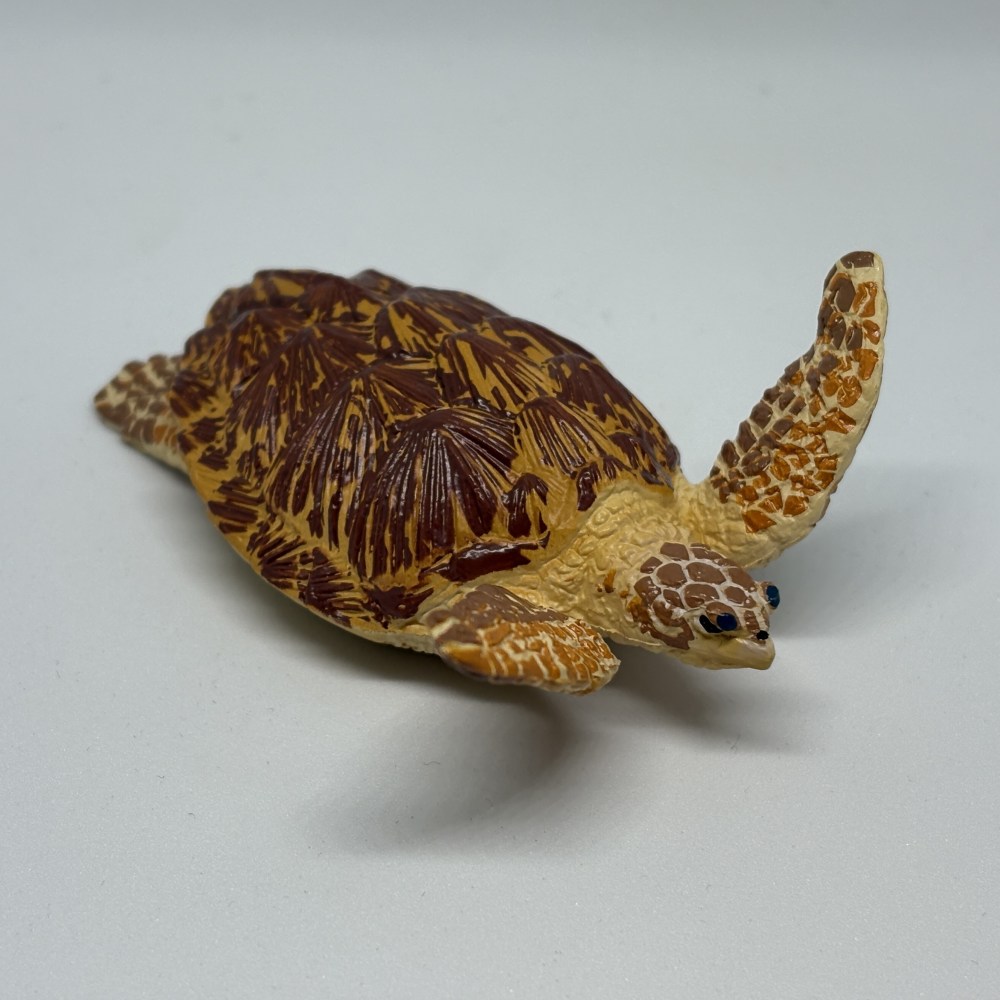
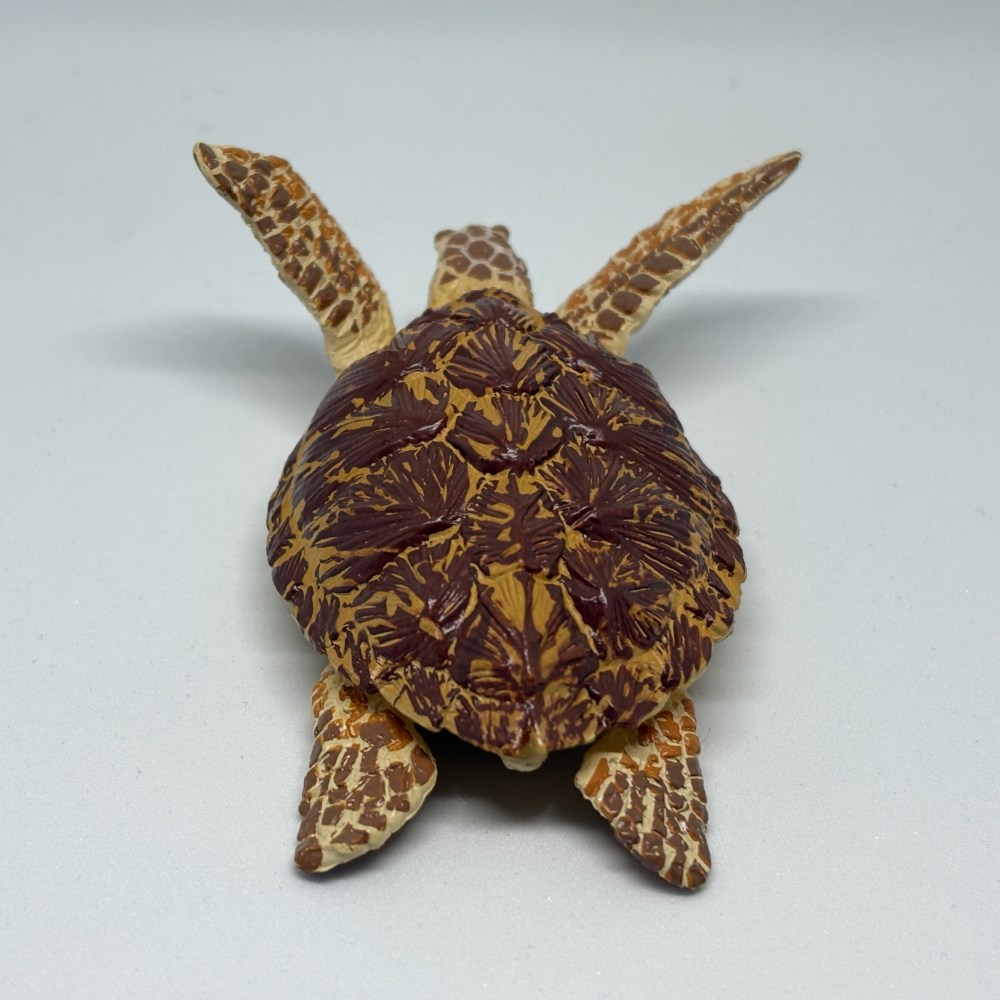
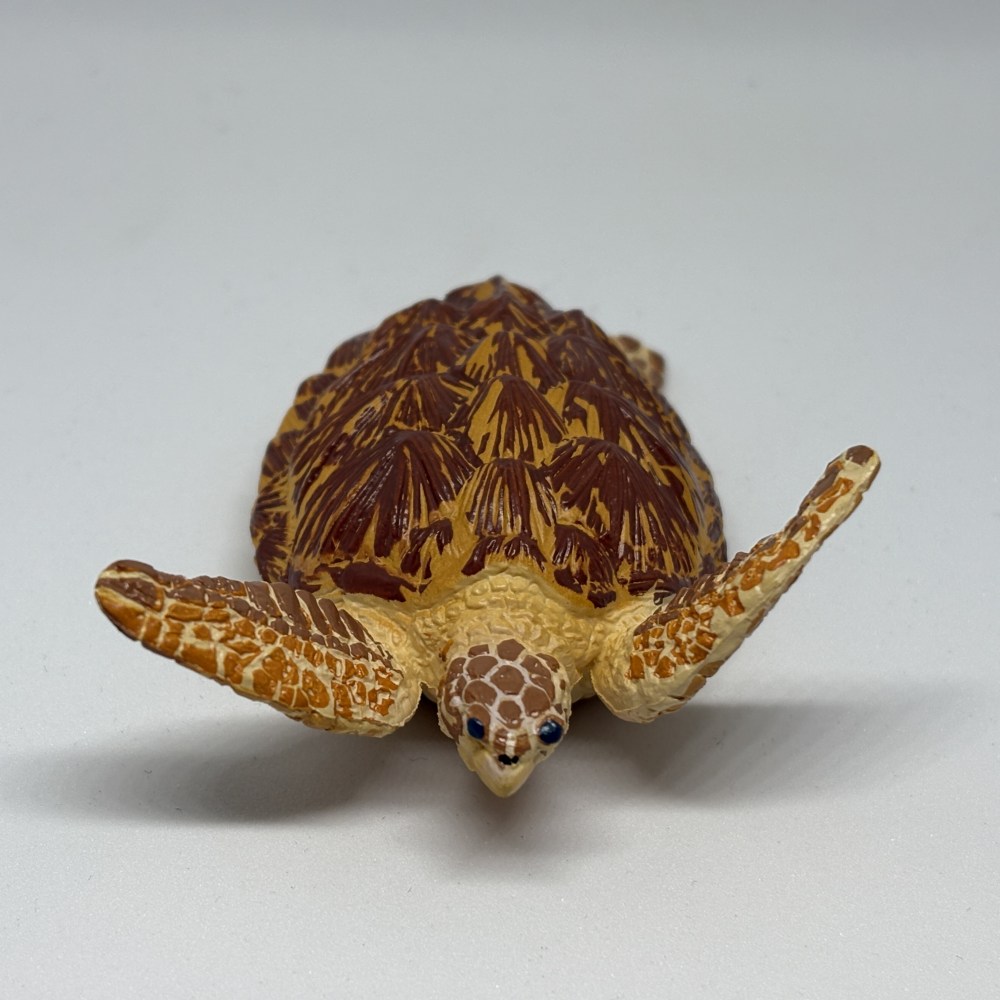
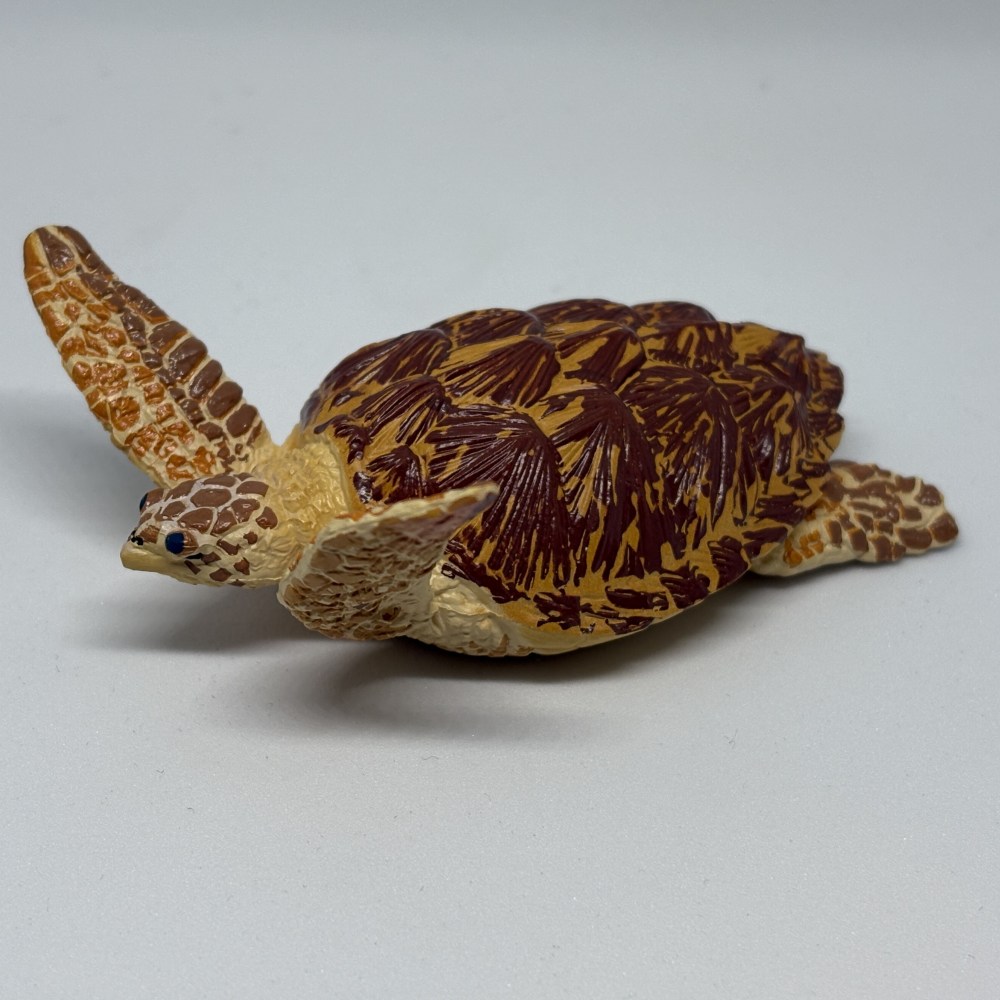
Olive ridley sea turtle
The olive ridley sea turtle (Lepidochelys olivacea) is the smallest and most abundant of all sea turtle species. It is known for its remarkable mass nesting behaviour, called ‘arribadas’, where thousands of females come ashore simultaneously to lay eggs. These turtles inhabit warm tropical waters of the Pacific, Atlantic, and Indian Oceans. Their diet is varied, including jellyfish, crustaceans, and algae. Despite their large numbers, olive ridleys face significant threats from egg poaching, bycatch in fishing gear, and habitat destruction. Conservation efforts, including protection of nesting beaches and turtle excluder devices in fisheries, have been vital for stabilising some populations. We sometimes see them in British waters as cold-stunned individuals that have been knocked off course by stormed, they unfortunately often don’t make it. However, you don’t have to worry about that with this faithful plastic miniature replica!

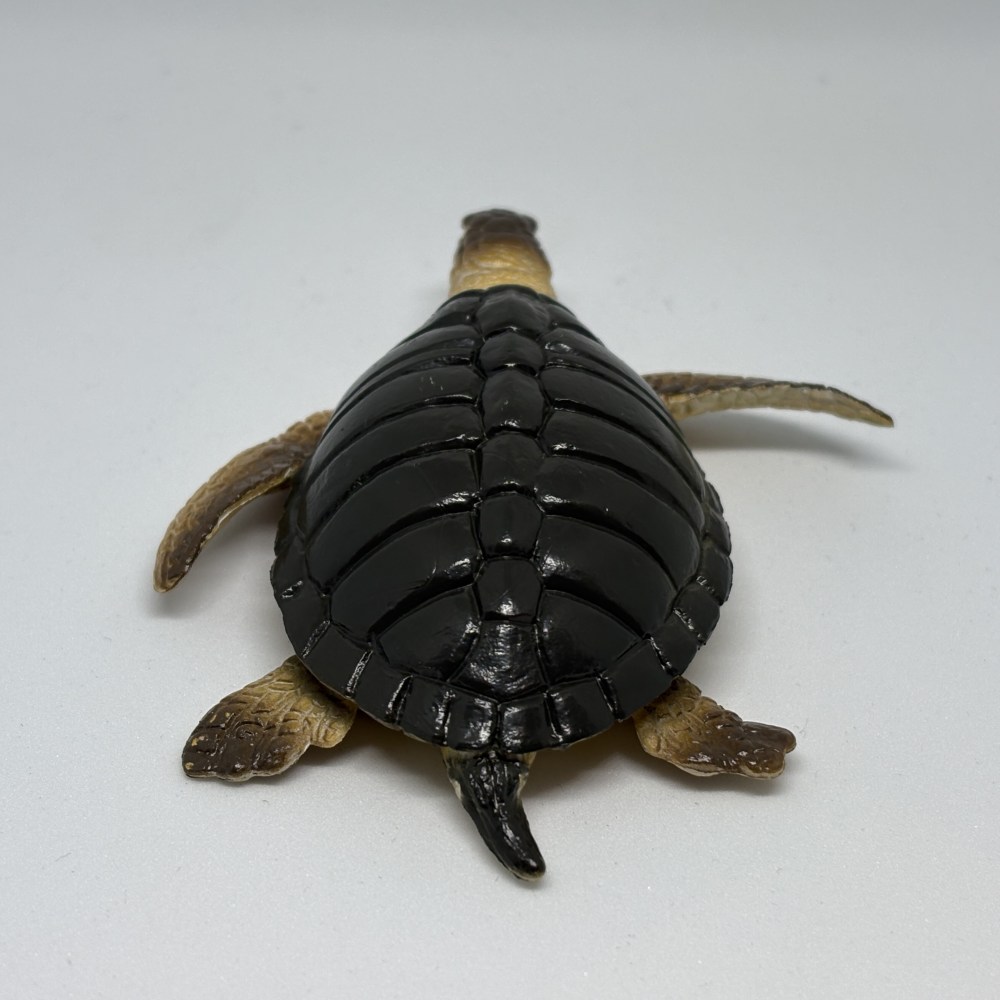
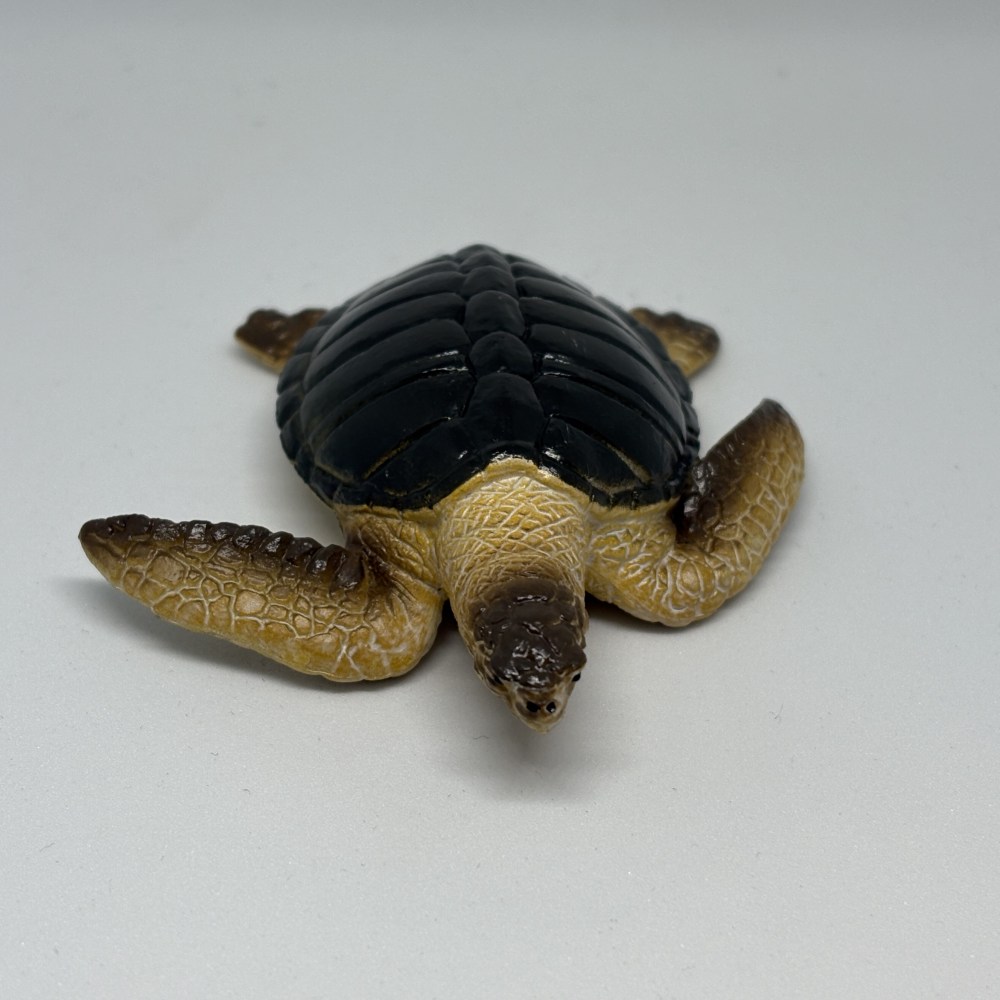
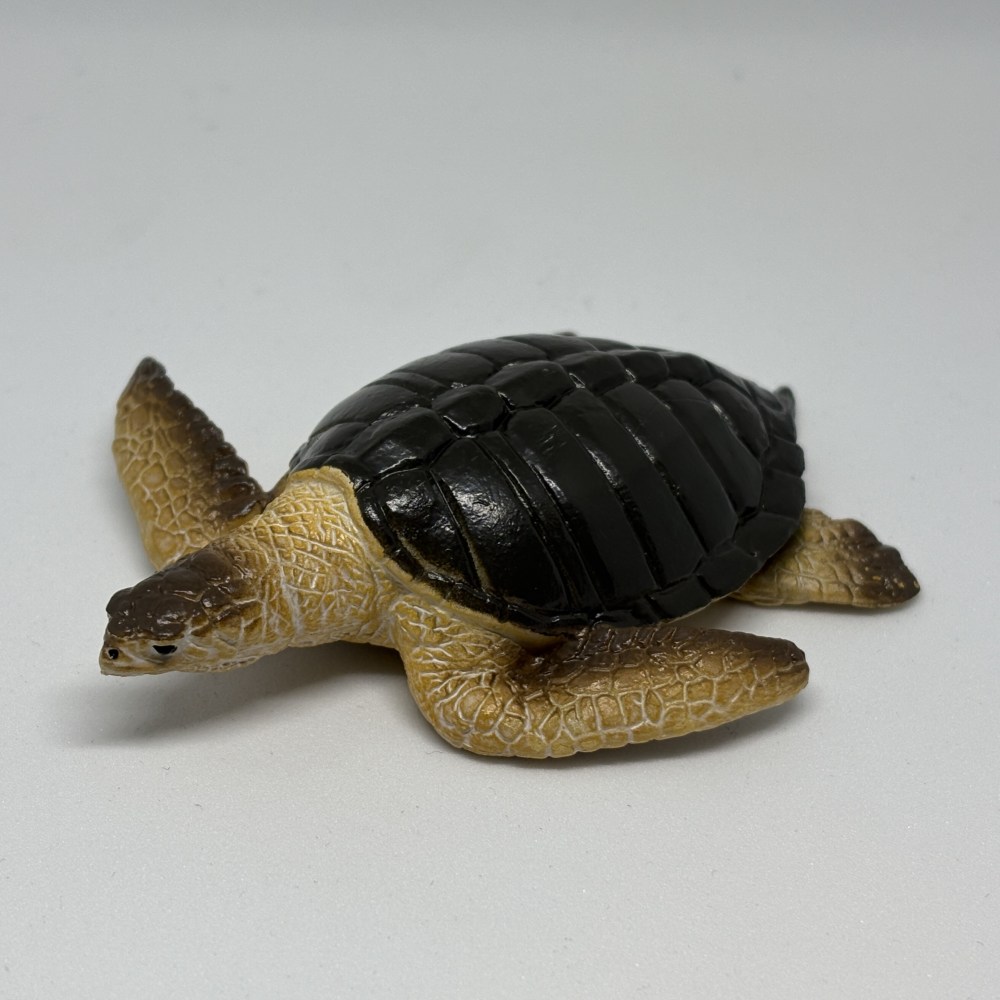
Flatback sea turtle
The final figurine is the flatback sea turtle (Natator depressus), a species native to the coastal waters of Australia and is unique among sea turtles for its relatively flat, smooth carapace with upturned edges. Of all the species listed here, this is the one I suspect most are unfamiliar with. Unlike the other species, it does not undertake long oceanic migrations and remains mostly in shallow, tropical waters. Flatbacks primarily feed on soft-bodied invertebrates such as sea cucumbers, jellyfish, and molluscs. They are the least studied of all sea turtles and are classified as Data Deficient by the IUCN, mainly due to their limited range. Because they nest only in Australia, their population is particularly vulnerable to localised threats such as coastal development and predation by feral animals.
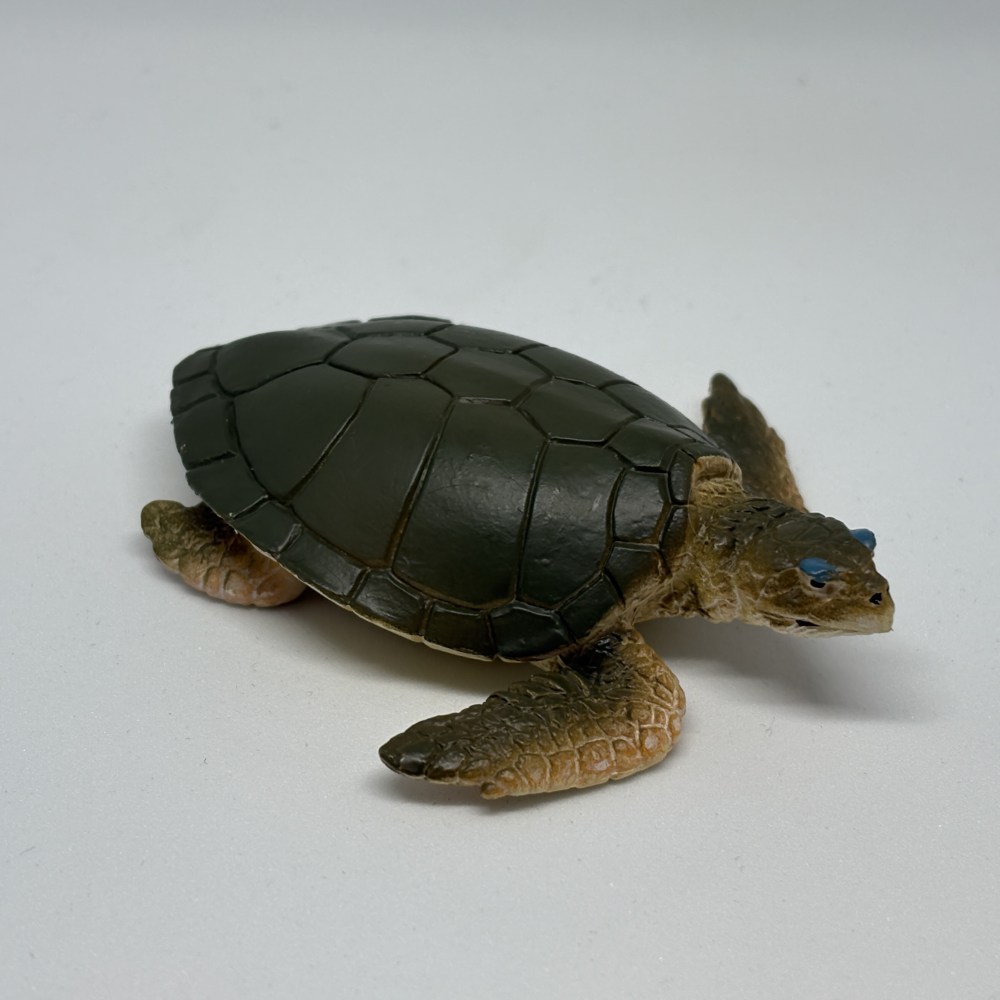
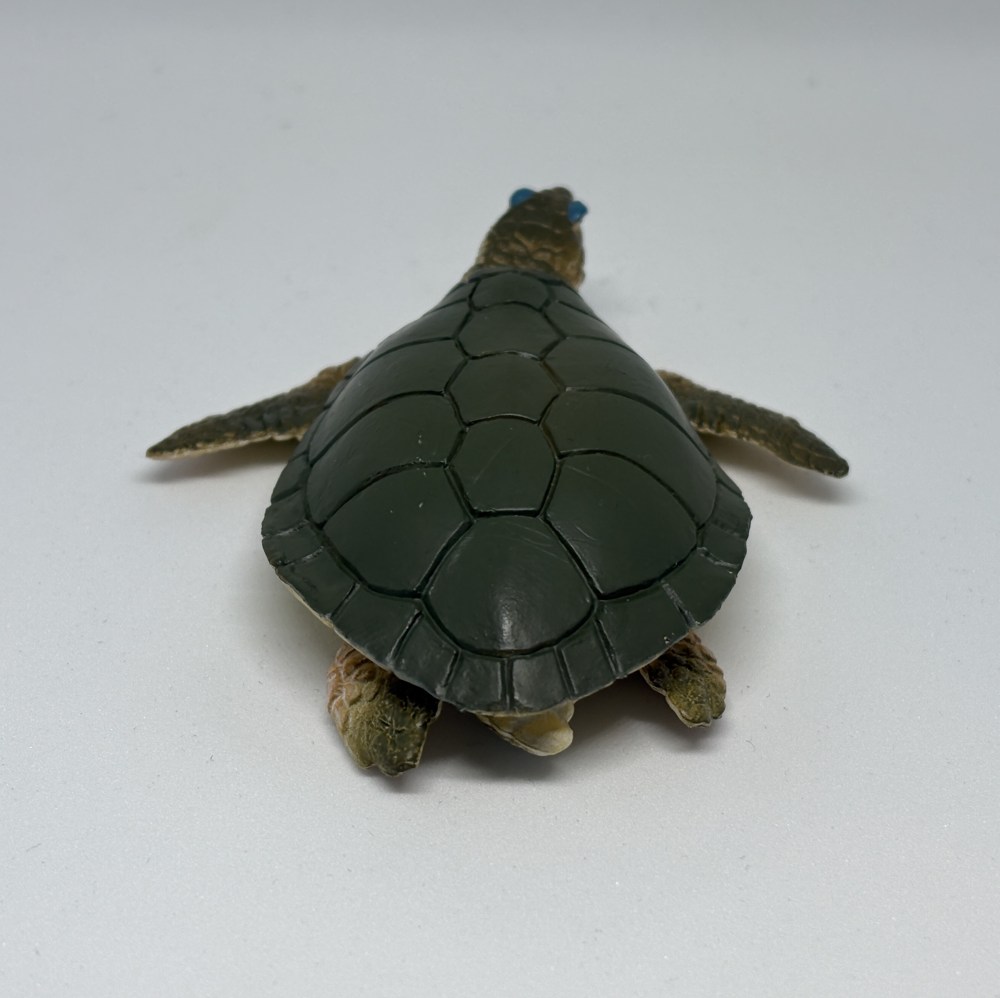
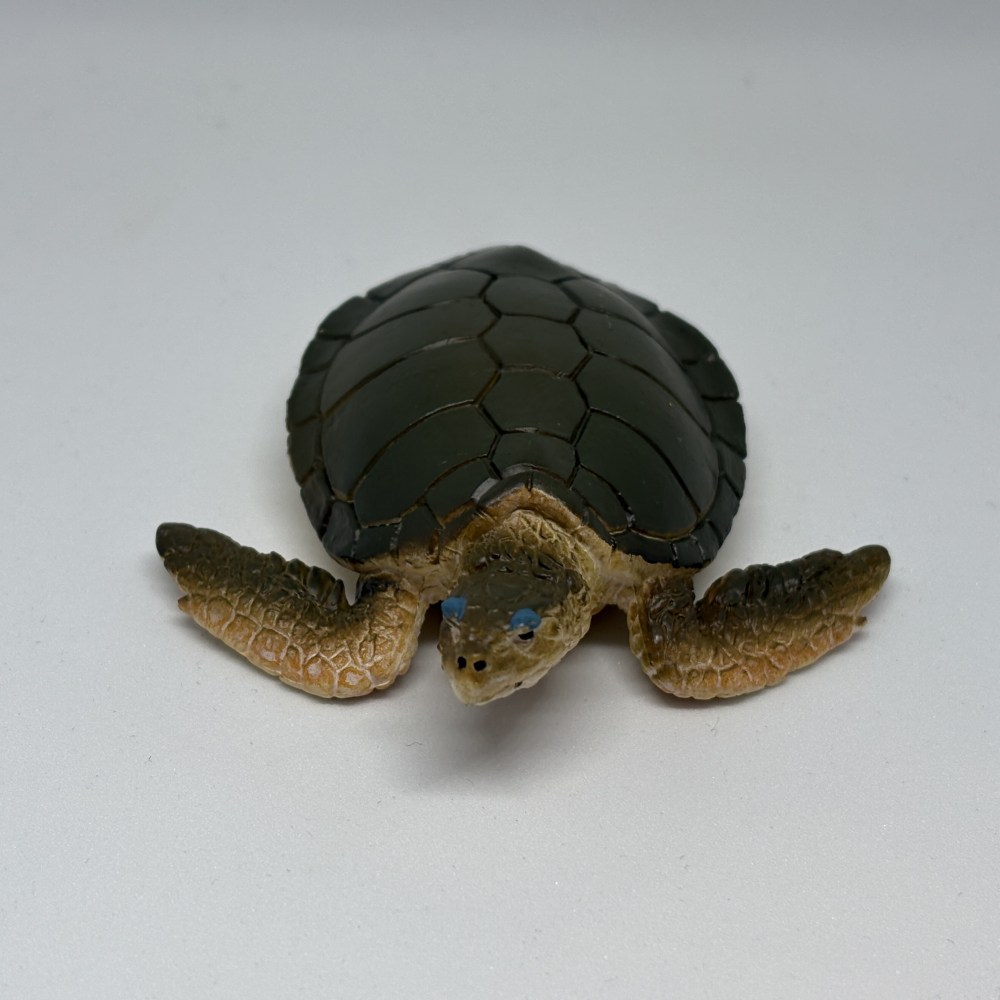

The Toymany Turtle Playset is a delightful collection designed to spark curiosity and creativity in children and turtle enthusiasts alike. Featuring a small variety of beautifully detailed turtle figurines inspired by real species, this playset brings the wonders of the ocean and freshwater habitats to life. Each figure is crafted with realistic textures and colours, encouraging imaginative play while also offering educational value, perfect for learning about marine life, biodiversity, and conservation. It is this life-like nature that I value most in to animals and hope you do too. Whether used for storytelling, school projects, or display, the Toymany Turtle Playset invites kids and collectors to dive into the fascinating world of turtles in a fun and engaging way. With Christmas coming up, these make the perfect stocking filler for a loved one, or perhaps yourself. If you do end up buying a set, please let me know which one is your favourite!
If you liked this post and enjoy reading this blog, please consider supporting me on Patreon where you will also gain access to exclusive content. You can also subscribe using the bar below. When buying toys through Mojo Fun, don’t forget to use the coupon code SJRA10 at the checkout for 10% off! Likewise, when ordering through Toymany, use code TMAFAS10 for 10% off your order. Thank you.






1 COMMENTS